Types of Science Content Per Buyer Journey Stage
Types of science content for scientific marketers to target buyers during specific stages of the buyer's journey.
Content plays a fundamental role in the pharmaceutical industry. Specifically, to educate practitioners on research, discovery and development. It is also used for marketing, even if, from a marketing perspective, the industry has been slow to adopt content as a driving strategy.
Potentially because of its indirect method of promoting a product or service. But as traditional methods perhaps become less effective, and costly, content marketing is becoming more sophisticated and more accountable for itself. Marketers are starting to break their habits, and science organisations are now catching up.
Not long ago, I listed a number of pharma and healthcare content marketing examples. All of which were innovative, unique and highly engaging types of content marketing which had the ability to bring people closer to an organisation, its message and its products.
Subscribe for marketing insights via email
This post is an expansion on that post, specifically looking at the types of content available to science marketers during each stage of the buyer’s journey to ensure that the content aligns with a particular need.
DIFFERENT SCIENCE CONTENT TYPES FOR DIFFERENT NEEDS
On a broad level, the buyer’s journey accommodates for the stages that the generic buyer of any product goes through regardless of industry, from initial awareness to consideration to a decision-making stage.
Of course, this linear process isn’t always representative of the behaviours of all buyers. In most cases, the process is much longer, complex and the “buyer” may move backwards or forwards if the content hasn't satisfied a particular need. Essentially, mixing up the touchpoints a science marketer might map out for its buyer journey.
During each stage, however, marketers must create specific content types that accommodate these needs, motivations and emotional states. For more on the specific stages, see this HubSpot post on the buyer’s journey.
Regardless of the order, those stages are still realised if a lead conversion or purchase is made. Therefore, content needs to be created to cater for specific issues and questions a buyer might experience at those individual stages.
1. AWARENESS STAGE SCIENCE CONTENT TYPES
During the awareness stage, within the sciences sectors, buyers might realise an opportunity for their organisation or identify a particular problem. It’s also possible that the buyer may only be browsing the internet for educational purposes without being aware of a definitive problem.
Science marketers, therefore, are advised to understand:
How and where buyers might conduct research and educate themselves on key topics and trends.
How a buyer might address a problem which his or her organisation is facing.
The marketing goals of the buyer persona, and the buyer persona itself.
MOTIVATIONS AND EMOTIONAL STATE
This is a stage where the buyer might feel frustrated or confused or even content, but open to a particular product or service that might make him or her more efficient and/or effective in the role. Understanding these factors will allow content to be created that is relevant at this early stage.
A buyer, for example, might look online for SEO tips and resources to improve a company's search visibility just as much as he might be interested to learn more about SEO in general.
TYPES OF CONTENT
Organisations need to be found if potential customers are in this phase. Content will feel “lightweight” in its nature and will have the ability to educate, and maybe even entertain. The ultimate aim is to be present when the target audience starts looking for answers or might be casually browsing.
Awareness stage science content types might include:
Blog posts
Editorial content and press releases
Whitepapers, e-books and guides
Interactive quizzes and competitions
Videos
Interviews/Q&As
EPrep provides explainer videos giving the visitor an introduction to their suite of sample preparation instruments.
Catalent offers a range of educational content on its website, many of which are gated that provide the ability to generate leads.
2. CONSIDERATION STAGE SCIENCE CONTENT TYPES
During a buyer’s journey, the time comes where the buyer has defined an objective and has decided on a course of action, such as a particular solution or type of product or service, and will require more specific information to help form a future decision. The buyer will still use the internet for education, but he or she is this time looking for something particular and is currently within an active process of evaluation.
Science marketers, therefore, are advised to understand:
How buyers buy. (Where might buyers look to find product and service-specific information?)
How buyers perceive the advantages and disadvantages of products and services.
Their unique selling propositions.
MOTIVATIONS AND EMOTIONAL STATE
At the consideration stage, it's common that the buyer is experiencing negative emotions such as eagerness and even anxiety. The problem has been defined, with a potential solution envisioned, and now it is that buyer’s role to find that solution. Pressure is often exerted on the B2B buyer here.
Usually, the buyer is in a process of narrowing down solution categories and options as well as identifying a long list of suppliers. Science marketers here can build trust with the buyer and demonstrate expertise and quality. Here, a buyer might have learned about SEO methods and identified that a content creation agency is required to create SEO friendly content.
TYPES OF CONTENT
Suitable content here is usually branded and will feel more “middleweight” than in the previous stage. It will also have the ability to educate, but the goal might be to inspire and build trust. The science marketer wants to connect with the buyer; the buyer wants assurances.
Consideration stage science content types might include:
Courses
Case studies
Reports
Product specifications/catalogues
Samples
Checklists
FAQs.
Beneo offers a range of webinars that visitors can sign up to on their website that present in-content as well as an opportunity to connect with the organisation.
Peak Scientific make user stories available with testimonials from current clients to showcase credibility as well as real-life examples of where products are used.
3. DECISION STAGE SCIENCE CONTENT TYPES
In this final decision-making stage, buyers have a clear picture of the solution as well as what the perfect supplier might look like. A shortlist has usually been created and the buyer has a responsibility in selecting the most appropriate supplier for his or her organisation; the science marketer’s goal is conversion.
Science marketers, therefore, are advised to understand:
The criteria buyers will use to investigate available products and services.
Level of expectation. (Do buyers expect to test the product before purchase?)
How many people/departments are involved in the decision-making process.
MOTIVATIONS AND EMOTIONAL STATE
This is a critical moment for the buyer as he or she weighs all options. In a B2B buyer journey, the buyer would have already consumed content at the two first stages, as well as connected with a sales representative. It will have taken some time to get to this phase which usually signals the significance of the purchase, meaning the buyer will experience fear.
Emotional feelings might have been experienced up to this phase, but the motivation now is all logical and rational. The SEO agency might offer the buyer, in this hypothetical scenario, a free audit and trail campaign along with a checklist for future campaigns to gain trust.
TYPES OF CONTENT
Content at this stage needs to be highly detailed, usually personal and authoritative which falls within the “heavyweight” category. Again, the content needs to educate but needs to be more persuasive than ever to secure a conversion or purchase. The buyer is on the edge of converting and it is the science marketer’s role to help get that buyer over the line.
Decision stage science content types might include:
Trials and demonstrations
Proposals or quotes
Product/vendor comparisons
Personalised content
Technical datasheets
SGD Pharma offers two product finders, allowing visitors to compare product specifications within the results for ease of searching.
Schott also offers multiple search functions for their products and present brochures and datasheets for more detailed information on its products.
BEING STRATEGIC WITH CONTENT TYPES
B2B science content is usually created and presented to website visitors that are looking for specific information to solve a particular problem or address a need.
Those needs differ per buyer's journey stage, therefore, if a science marketer is to be strategic with its content marketing, and demonstrate results, it needs to produce content that caters for each stage of that buyer's journey. Otherwise, the content might not be suitable or effective and is not likely to produce results.
The content types changes and becomes more detailed and product/organisation-specific (from lightweight content to heavyweight content) as the journey towards a sales or conversion progresses and the emotional state of the buyer intensifies.









